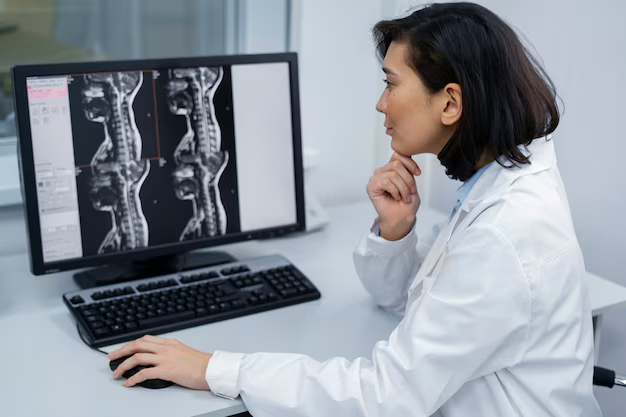Understanding Scoliosis: The Science Behind the Curve
When the word scoliosis is mentioned, many picture a spine that doesn't align straight, but what actually causes this condition to develop? Scoliosis entails more than just a physical misalignment; it has multiple origins, implications, and effects on those diagnosed. Whether you're a concerned parent, someone newly diagnosed, or simply curious about the condition, understanding scoliosis can help you comprehend its impact on everyday lives.
The Mystery of Scoliosis Origins
Scoliosis is characterized by an abnormal lateral curvature of the spine. While most often recognized as a spinal disorder during adolescence, its roots and triggers are diverse. It's not just a single condition but a spectrum influenced by various factors.
Genetic Predispositions: Does Scoliosis Run in Families?
Genetics play a significant role in scoliosis, but it's not as straightforward as inheriting eye color or height. Research shows that scoliosis can cluster in families, though the exact genes are complex and still being studied. Instead of a single "scoliosis gene," there are likely multiple genetic factors that interact with environmental triggers. Anyone with a family history of scoliosis should remain observant of early signs, especially during their growth spurts.
Understanding Idiopathic Scoliosis
The term idiopathic means a condition that arises spontaneously or for which the cause is unknown. The most common form of scoliosis, particularly in adolescents, falls under this category. While idiopathic disease might sound mysterious, its prevalence suggests that while we may not identify a direct cause, underlying genetic and environmental factors are significantly influential.
Scoliosis Through Different Lenses
Types of Scoliosis: More Than Just a Curve
Understanding the varied types of scoliosis aids in grasping its complexity:
- Congenital Scoliosis: Resulting from a malformation of the spine during fetal development, congenital scoliosis is typically detected earlier than other types.
- Neuromuscular Scoliosis: Associated with conditions like cerebral palsy or muscular dystrophy, this type arises when the spine curves due to muscle weakness or neurological issues.
- Degenerative Scoliosis: Unlike its adolescent counterpart, this arises in adults due to the degeneration of spinal discs and joints, often stemming from arthritis.
The Role of Growth and Development
Adolescence, a time marked by rapid growth, is when scoliosis most commonly makes its debut. The reason behind this is the sudden lengthening of the spine, which may emphasize or even initiate misalignments. When these growth periods are coupled with genetic predispositions, the likelihood of developing scoliosis can substantially increase.
Diagnosing Scoliosis: From Observation to Confirmation
Recognizing Early Signs
Early detection can significantly alter the management and outcomes for scoliosis patients. Key indicators include:
- Uneven shoulders or waist
- A prominent shoulder blade
- Hips that seem tilted
- Leaning to one side
Parents and guardians should remain vigilant during their child's growth years, looking out for these physical cues.
The Diagnostic Journey: From Physical Exams to Imaging
Once scoliosis is suspected, healthcare professionals typically employ a detailed physical examination. Techniques such as the Adam's Forward Bend Test help spot abnormalities. If scoliosis is suspected, an X-ray confirms the presence and degree of spinal curvature, gauging the severity of the condition.
Living with Scoliosis: Navigating Everyday Challenges
Physical and Emotional Implications
Living with scoliosis impacts more than just physical alignment. It can affect self-esteem and body image, especially among adolescents striving for a sense of normalcy. Schools, workplaces, and social situations can feel different for individuals with scoliosis, which is why awareness and sensitivity are crucial in any educational or caregiving environment.
Adapting Daily Activities
For those with scoliosis, adjustments might be necessary, whether in selecting ergonomic furniture or participating in physical activities. Maintaining a flexible and routinely active lifestyle helps promote overall spinal health and comfort.
The Path Ahead: Insightful Management and Support
While treatment paradigms for scoliosis vary, understanding options fosters empowerment:
Non-Surgical Approaches: From Bracing to Physiotherapy
Non-surgical management often begins with bracing, particularly for adolescents. When started early, braces can prevent further curvature progression. Paired with physiotherapy focused on strengthening back muscles and enhancing flexibility, this approach can help many maintain spinal alignment.
Surgical Interventions: Understanding the Options
In severe or rapidly progressing cases, surgery might be recommended, with spinal fusion being the most common procedure. While the thought of surgery can be daunting, understanding its purpose and success rate can ease concerns. Medical professionals typically reserve surgery for instances where non-invasive methods prove insufficient.
Support Systems: Embracing Community and Resources
Living with scoliosis doesn't mean facing challenges alone. Support groups, both online and in-person, offer platforms for sharing experiences, advice, and encouragement. Friends, family, and medical professionals are integral to an individual's support network, highlighting a collaborative approach in managing scoliosis.
Empowering the Scoliosis Community
Ultimately, understanding scoliosis is not about isolating it as merely a medical condition but integrating it into the tapestry of human diversity. Every curve tells a story, a journey marked by resilience, adaptation, and innovation. As research progresses and awareness grows, the scoliosis community stands at the forefront, empowered by knowledge and bonded by shared experiences.
Key Takeaways on Scoliosis ⭐
- Types of Scoliosis: Idiopathic, congenital, neuromuscular, and degenerative, each with distinct origins.
- Importance of Early Detection: Spotting early signs like uneven shoulders can lead to proactive management.
- Management Options:
- Non-Surgical: Bracing and physiotherapy to manage curvature.
- Surgical: Reserved for severe cases to prevent further spinal deformity.
- Support Systems: Community resources and support groups can provide guidance and encouragement.
- Holistic Impact: Scoliosis affects physical, emotional, and social aspects of a person's life.
Understanding scoliosis in-depth not only enhances personal knowledge but equips individuals and families to seek the right support and make informed choices. 🌟
